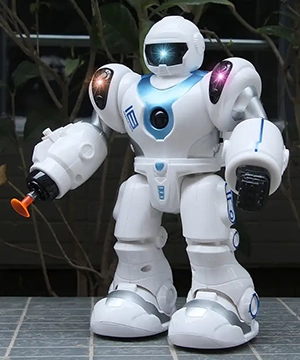Drone toys are becoming increasingly popular among children, offering not just entertainment but also opportunities to develop STEM skills, hand-eye coordination, and creativity. However, with so many options on the market, how can parents select a drone that is safe, fun, and age-appropriate? This guide will cover key factors such as safety, features, age suitability, and price to help you make the best choice for your child.
1. Why Choose a Drone Toy for Kids?
Drones are more than just flying gadgets—they offer several benefits:
- Encourages STEM Learning: Drones introduce kids to physics, engineering, and even basic coding.
- Improves Hand-Eye Coordination: Piloting a drone requires precision, enhancing motor skills.
- Promotes Outdoor Play: Unlike video games, drones encourage kids to play outside.
- Boosts Creativity: Many drones have cameras, allowing kids to explore photography and videography.
However, not all drones are suitable for children. Parents should consider the following factors before making a purchase.
2. How to Choose the Right Drone for Your Child
(1) Safety First
A child’s safety should always be the top priority. Look for:
- Propeller Guards: Prevent injuries from spinning blades.
- Lightweight Design: Drones under 250g are less likely to cause harm if they crash.
- Auto-Hover & Obstacle Avoidance: Reduces the risk of collisions.
- Non-Toxic Materials: Ensure the drone meets child safety standards.
Recommended Models:
- Holy Stone HS210 (for ages 6+, lightweight with propeller guards)
- DJI Tello (has obstacle avoidance, great for beginners)
(2) Age Appropriateness
Different age groups require different types of drones:
- Ages 3-6: Ultra-light, durable mini-drones with simple controls (e.g., Sky Viper Stunt Drone).
- Ages 7-12: Beginner drones with cameras (e.g., Snaptain SP350).
- Ages 13+: More advanced models like the DJI Mini 2 SE (for aerial photography).
(3) Ease of Control
- One-Touch Takeoff/Landing: Helps younger kids operate the drone easily.
- Gyro Stabilization: Prevents excessive wobbling for smoother flights.
- Remote vs. App Control: Younger kids may prefer physical remotes, while older kids can try app-based controls (e.g., Ryze Tello supports coding).
(4) Battery Life & Charging
- Flight Time: Most toy drones last 5-15 minutes; opt for models with replaceable batteries (e.g., Potensic A20).
- Charging Method: USB charging is more convenient than proprietary chargers.
(5) Price & Value
- Under $50: Good for first-time users (e.g., Syma X20).
- $50-$150: Best balance of features and affordability (e.g., Holy Stone HS720).
- $150+: For advanced users (e.g., DJI Mini 3).

3. Top Drones for Kids
| Model | Recommended Age | Key Features | Price Range |
|---|---|---|---|
| Holy Stone HS210 | 6+ | Lightweight, durable, propeller guards | $30-$50 |
| DJI Tello | 8+ | Programmable, 720P camera | $100-$150 |
| Snaptain SP350 | 10+ | Gesture control, 1080P camera | $80-$120 |
| Potensic A20 | 5+ | Mini size, wind-resistant | $20-$40 |
| Ryze Tello Boost Combo | 12+ | Supports Scratch coding | $150-$200 |
4. Important Considerations
- Check Local Regulations: Some areas restrict drone flight altitude and zones.
- Parental Supervision: Young children should always fly drones under adult guidance.
- Fly in Open Spaces: Avoid crowded areas, trees, and power lines.
- Regular Maintenance: Inspect propellers and batteries to ensure safety.
5. Conclusion
Choosing the right drone toy can provide endless fun while helping kids develop valuable skills. By considering safety, age-appropriateness, ease of use, and budget, you can find the perfect drone for your child.
🚁 Now, it’s time for your child to take flight and explore the skies!

